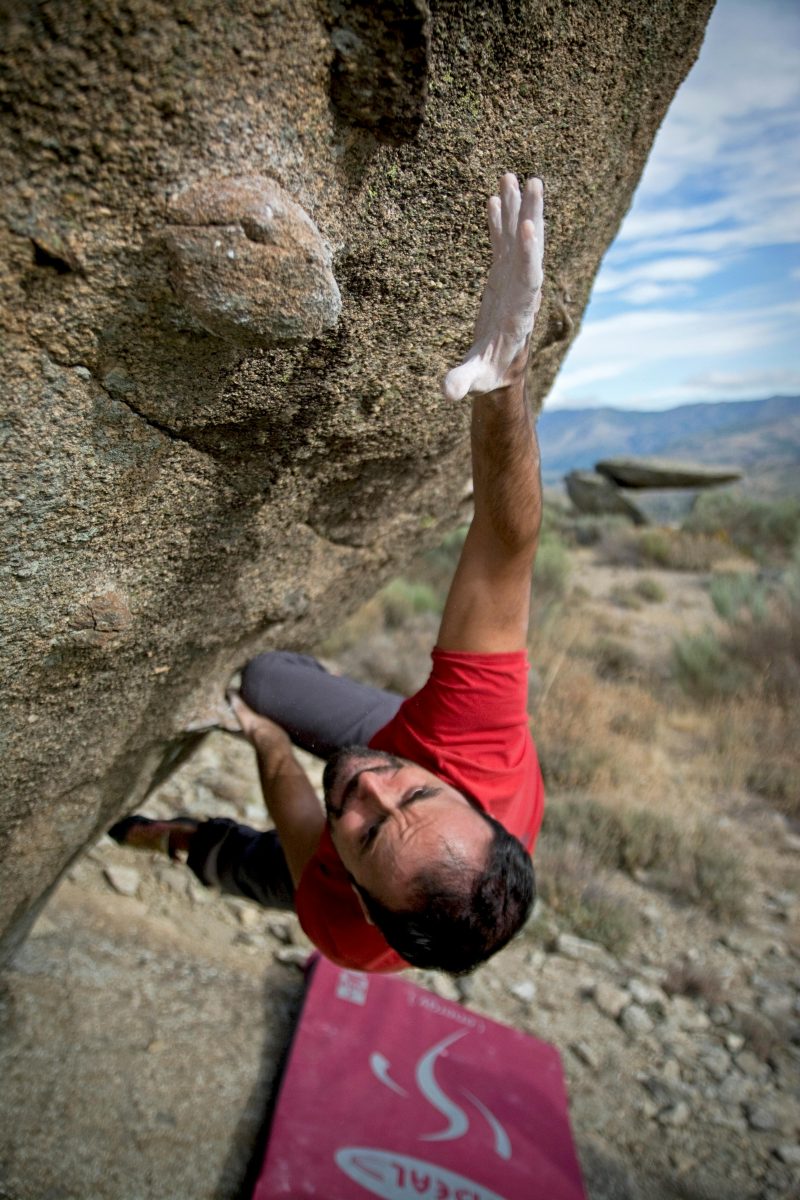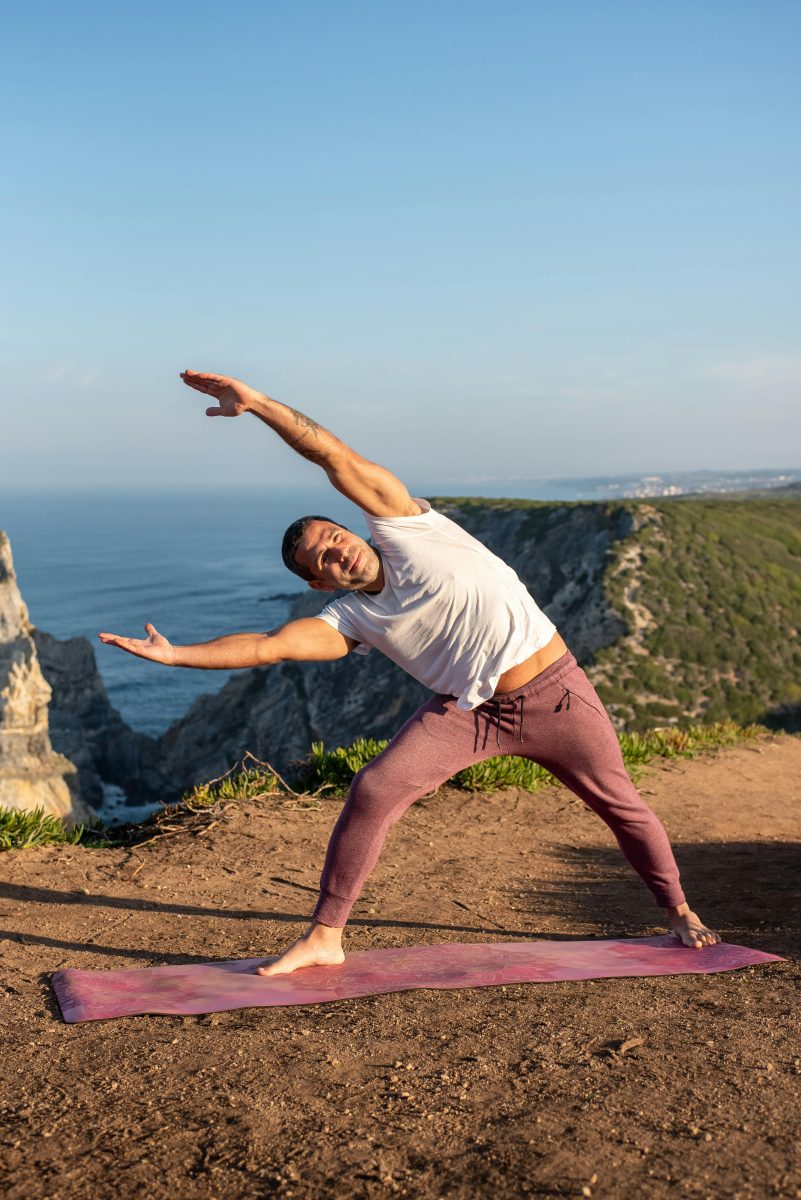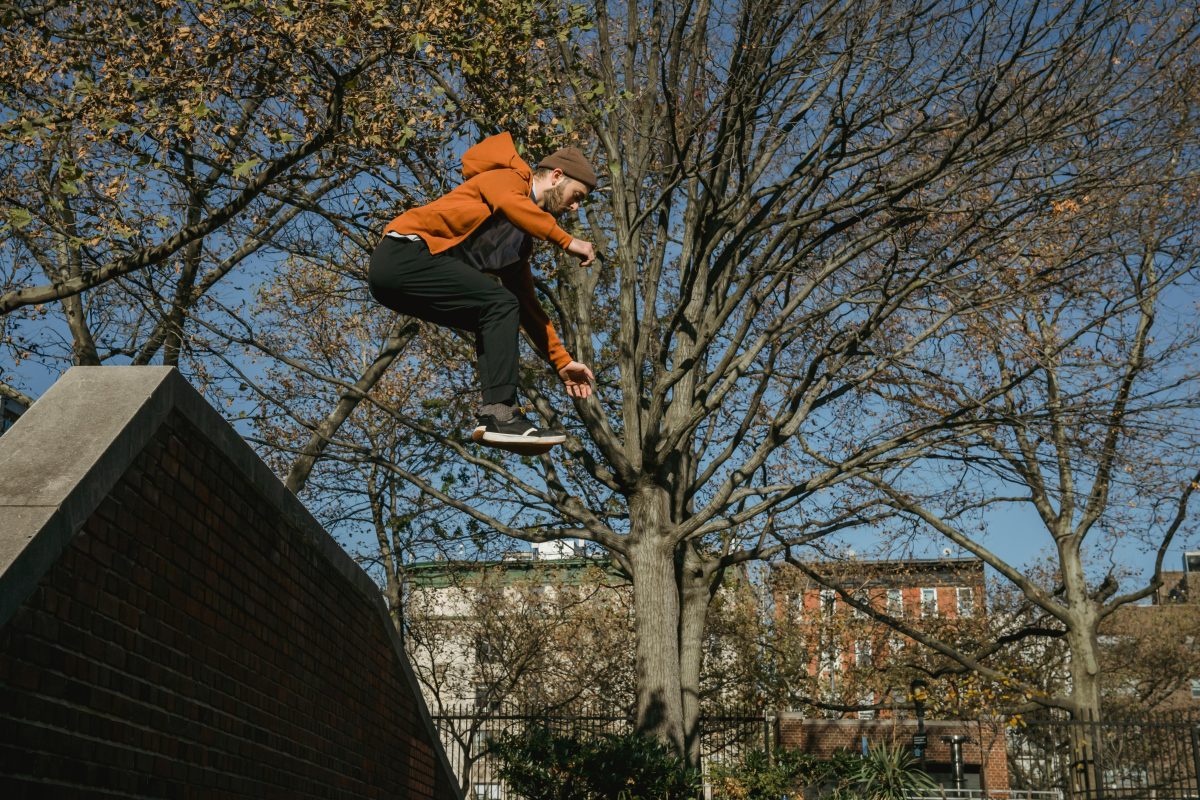Last Updated on: 14th July 2024, 09:36 am
Introduction to Outdoor Exercise Challenges

Embarking on an outdoor exercise journey unfolds a myriad of benefits, yet it’s not without its hurdles. Weather unpredictability, safety concerns, and lack of motivation often stand as formidable barriers. These obstacles not only deter the initiation of an outdoor fitness routine but can significantly impact one’s physical and mental well-being. The absence of regular physical activity exacerbates health risks, while the mental refreshment found in nature’s embrace remains untapped.
Understanding these barriers is the first step towards overcoming them. It’s about recognizing the impact they have on our lives, both physically and mentally. The fresh air, the natural light, and the greenery that outdoor exercise offers can dramatically improve one’s mood and overall health. Yet, when these are missed, it’s not just the body that suffers; the mind does too. The journey to overcoming these barriers begins with acknowledging their presence and the profound effects they have on our well-being.
- With determination and the right strategies, these challenges can be navigated successfully.
- The rewards? A healthier, happier you, and an outdoor exercise routine that not only becomes achievable but enjoyable.
Overcoming Psychological Barriers to Outdoor Exercise

Conquering Fear and Anxiety
Fear and anxiety often serve as invisible chains, holding many back from exploring the great outdoors. The thought of stepping outside one’s comfort zone can be daunting. However, the key to breaking free lies in gradual exposure. Start with short, less intimidating outdoor activities and progressively challenge yourself. This method not only diminishes fear but also acclimatizes the mind to the outdoor setting, making it familiar and less frightening.
Setting Small, Achievable Goals
Confidence and motivation are the twin engines that drive us towards our goals. Building them doesn’t happen overnight but through the accumulation of small victories. Set realistic, achievable goals for your outdoor activities. Whether it’s a daily 10-minute walk in the park or a weekly hike, these goals serve as stepping stones, building your confidence and keeping the flame of motivation burning bright.
Embracing Social Support
Humans are inherently social creatures, and the journey towards overcoming psychological barriers is no exception. The support of friends, family, or a community of like-minded individuals can be a powerful catalyst for change. Sharing your goals, celebrating your successes, and even facing setbacks together can significantly lighten the psychological load. Social support not only provides encouragement but also accountability, making the path to regular outdoor exercise less daunting and more achievable.
Overcoming psychological barriers to outdoor exercise requires patience, perseverance, and a positive mindset. By confronting fears, setting achievable goals, and leaning on the support of others, what once seemed insurmountable becomes within reach. The journey may be challenging, but the rewards—a healthier, happier you—are well worth the effort.
Environmental and Seasonal Challenges in Outdoor Exercise

Navigating Weather-Related Obstacles
Extreme weather conditions—be it scorching heat, biting cold, or relentless rain—pose significant challenges to outdoor exercise. Yet, they can be managed with the right approach. Dressing in layers during cold months, opting for moisture-wicking fabrics in the heat, and wearing waterproof gear in the rain are essential strategies. Timing is also crucial; aim for early morning or late evening workouts to avoid peak weather extremes.
Dealing with Air Quality and Pollution
Poor air quality can derail the best-laid plans for outdoor activities. On days when pollution levels are high, consider indoor alternatives or locations away from traffic congestion. Monitoring air quality indexes through reliable sources can guide you in planning your outdoor exercise, ensuring you breathe cleaner air while staying active.
Adapting Exercise Routines to Seasons and Environments
Each season brings its unique beauty and challenges, requiring adjustments to your exercise routine. In winter, focus on warm-up exercises to prepare your body for the cold. Summer calls for hydration and sun protection strategies. Spring and fall, with their milder conditions, offer the perfect opportunity to try new outdoor activities. Adapting your routine not only keeps you physically active throughout the year but also connects you with the natural rhythm of the seasons.
Overcoming environmental and seasonal barriers to outdoor exercise demands creativity, flexibility, and a proactive approach. By anticipating and strategizing against potential obstacles, you ensure that your fitness journey is not just confined to the great indoors but expands into the vast, vibrant world outside.
Safety Concerns and Precautions for Outdoor Exercisers

Addressing Personal Safety Fears in Outdoor Settings
Confronting the unease that accompanies outdoor workouts begins with preparation and awareness. Familiarize yourself with your chosen route during daylight hours, and always let someone know your plans. Confidence grows not from avoiding fear, but from facing it with strategic planning and a clear mind.
Tips for Staying Safe During Early Morning or Late Evening Workouts
Visibility is your ally in the dim light of dawn or dusk. Wear reflective clothing and carry a flashlight to ensure you’re seen by others. Stick to well-lit paths and populated areas, avoiding the isolation that can make you a target. Moreover, varying your route and workout times can keep potential threats guessing.
Essential Safety Gear and Technology for Outdoor Exercisers
Investing in the right gear can be a game-changer for outdoor safety. High-visibility vests, headlamps, and reflective arm bands are must-haves. Technology, too, plays a crucial role. Consider a GPS tracker or a safety app that shares your location with trusted contacts in real-time. For solo adventurers, a personal alarm can serve as a powerful deterrent against unwanted encounters.
Embracing the outdoors for exercise should be liberating, not limiting. With the right precautions, the fear that once held you back transforms into confidence. This confidence, built on the foundation of safety and preparedness, not only enhances your outdoor experience but enriches your life. The world outside awaits, ready to be explored with assurance and peace of mind.
Physical Limitations and Adaptations for Outdoor Exercise

Managing Physical Constraints and Chronic Conditions
Physical limitations or chronic conditions need not be a barrier to enjoying the great outdoors. It’s about adapting activities to meet your body’s needs. Start with low-impact exercises, such as walking or swimming, that can be adjusted in intensity. Listening to your body and consulting with healthcare professionals ensures a safe and effective exercise regimen.
Tailoring Outdoor Activities to Different Fitness Levels and Abilities
Everyone’s fitness journey is unique. Tailoring outdoor activities to individual abilities maximizes enjoyment and minimizes risk. For beginners, gentle trails offer a great start, while more experienced enthusiasts might seek challenging terrains. Group activities can also be modified, ensuring everyone participates and benefits, regardless of their fitness level.
The Importance of Proper Gear and Attire for Comfort and Injury Prevention
Choosing the right gear is crucial for a comfortable and safe outdoor exercise experience. Proper footwear provides support and reduces the risk of injury, while appropriate clothing protects against the elements. Investing in quality, activity-specific gear not only enhances performance but also ensures safety, allowing you to focus on the joy of movement.
Overcoming physical limitations and adapting to various fitness levels are essential steps in making outdoor exercise accessible and enjoyable for all. With the right preparations and mindset, the benefits of engaging with nature can be universally embraced, leading to improved physical health and a deeper connection with the world around us.
Creating a Sustainable Outdoor Exercise Routine

Setting Realistic Goals and Tracking Progress
- Start by setting attainable goals – Aim for a certain number of steps each day or plan to explore a new trail each week for clear direction.
- Track your progress – Use a journal or fitness app to see tangible evidence of improvement, which fuels motivation.
Incorporating Variety to Stay Engaged and Motivated
- Vary your workouts – Alternate between activities like cycling, running, and yoga in the park to keep your routine fresh and engaging.
- Benefits of diversity – This approach not only enhances physical fitness but also keeps enthusiasm alive.
Leveraging Community Resources and Outdoor Groups for Support
- Find support networks – Utilize local community centers for information on group activities and outdoor events.
- Join a group – Becoming part of a hiking club or outdoor fitness class can offer camaraderie, making exercise a social and enjoyable event.
Creating a sustainable outdoor exercise routine is a dynamic process that requires a blend of personal commitment and external support. By setting realistic goals, embracing variety, and tapping into community resources, the path to a consistent and enjoyable outdoor fitness regimen becomes clear. The result is a lifestyle change that brings lasting benefits, both physically and mentally, and a deeper connection to the natural world.
In Closing
Embrace the outdoors, transform your well-being. This journey, though fraught with challenges, offers unparalleled rewards. By confronting fears, adapting to the environment, and seeking support, we unlock a path to a healthier, happier self. The article navigates through psychological barriers, environmental hurdles, and safety concerns, presenting actionable strategies for a fulfilling outdoor exercise routine. Let’s step forward, harnessing the power of nature and community, to cultivate a sustainable, joyous fitness journey.
Overcoming Barriers to Outdoor Exercise FAQs
Protecting yourself from the sun involves wearing sunscreen with a high SPF, lightweight long-sleeved clothing, and a hat or visor. Exercising during cooler parts of the day, such as early morning or late afternoon, when the sun’s rays are less intense, can also help. Sunglasses with UV protection are essential for protecting your eyes from harmful rays.
Staying hydrated during outdoor exercise is crucial and can be managed by carrying a water bottle and drinking regularly, not just when you feel thirsty. Electrolyte-enhanced drinks can be beneficial for longer sessions to replace salts lost through sweat. Planning your route to include water fountains or places where you can refill your bottle ensures you won’t run out of water.
Staying motivated in bad weather is challenging but achievable by dressing appropriately for the conditions and setting realistic goals. Waterproof and layered clothing can protect against rain and cold, while setting shorter, more achievable exercise goals can keep motivation high. Additionally, reminding yourself of the invigorating feeling and sense of accomplishment post-exercise can be a powerful motivator.
Managing pollen allergies while exercising outdoors involves choosing the right time and place, such as after rain when pollen levels are lower, and avoiding high-pollen areas like grassy parks. Wearing sunglasses and a hat can help keep pollen away from your eyes and face. Showering immediately after exercising outdoors can also help remove pollen from your skin and hair.
Outdoor exercise in urban areas can be safe with proper planning and awareness of your surroundings. Choosing well-lit, populated routes and wearing reflective clothing can enhance safety during early morning or evening workouts. Additionally, staying informed about local traffic patterns and air quality can help you choose the safest times and places to exercise.
The equipment needed for outdoor exercise varies by activity but generally includes comfortable, weather-appropriate clothing and sturdy footwear. For activities like hiking or trail running, additional gear such as a hydration pack, sunscreen, and insect repellent may be necessary. Investing in quality equipment that suits your chosen activity can enhance your experience and safety.
Finding time for outdoor exercise can be managed by integrating it into your daily routine, such as walking or biking for commuting. Short, high-intensity workouts can also be effective and time-efficient. Planning and prioritizing exercise as a non-negotiable part of your day can help ensure it gets done.
Finding good places for outdoor exercise can start with a simple internet search for local parks, trails, or community sports groups. Apps and social media groups dedicated to outdoor fitness can offer recommendations and reviews for the best spots in your area. Exploring different areas can also be a fun way to discover new places and keep your routine interesting.
Feeling self-conscious is a common barrier, but focusing on your personal fitness goals and the benefits of outdoor exercise can help overcome this feeling. Many people find that wearing comfortable, appropriate clothing and starting in less crowded areas can boost their confidence. Over time, as you become more accustomed to your routine, the self-consciousness often diminishes.
Starting to exercise outdoors is possible for people of all fitness levels by beginning with low-impact activities like walking or cycling. Setting small, achievable goals and gradually increasing the intensity and duration of your workouts can help build your fitness over time. Remember, everyone starts somewhere, and the key is to progress at your own pace and listen to your body.
Orlando is a all round athlete from Australia, now resident in Germany. His sports of passion of American Football(Offensive line), weight training and indoor rock climbing where he uses his 195cm wing span to his advantage.



